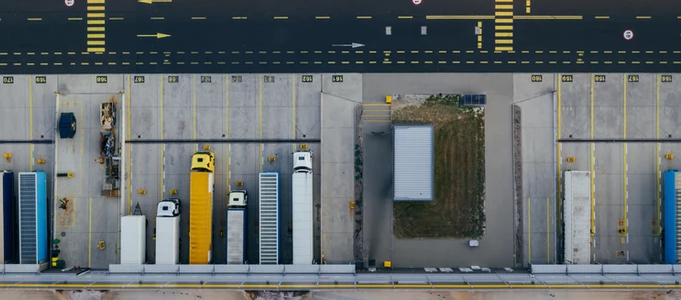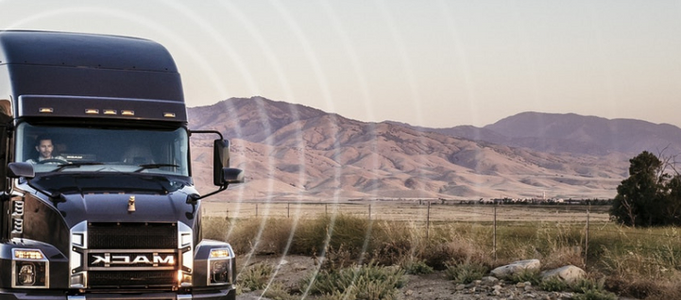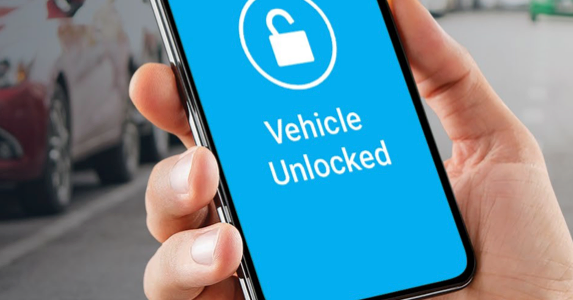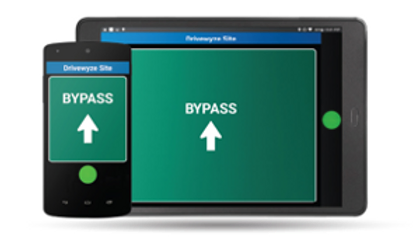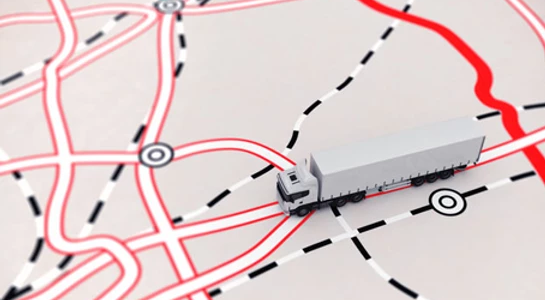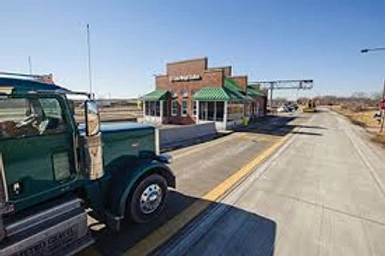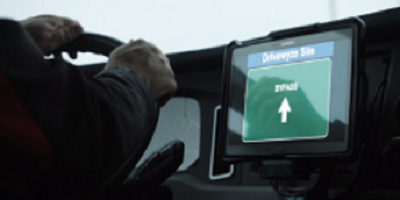What is a Connected Car?
Connected cars have opened up a world of possibilities for enhancing vehicle performance. The most game-changing smart device in recent years isn’t a phone or a smart watch… we believe it’s your car. All over the world, businesses, governments and individuals are equipping their vehicles with internet connection, while the top auto manufacturers are embedding telematics devices in their newest models.
What does the buzz word “connected car” actually mean?
A connected car is a vehicle that is equipped with mobile technology, and therefore “connected” via the internet. Telematics is also used to connect cars, by means of a small device that plugs into the vehicle, or through embedded technology. The telematics device acts as an Internet of Things (IoT) hub which sends vehicle data to a cloud service, where it can be processed and accessed by the vehicle owner or fleet manager.
Types of connectivity in cars
Connected car capabilities can be grouped into several categories:
-
Telematics: tracking vehicle location and activity, driver behavior, engine diagnostics. Organizations can gain visibility over a large fleet’s performance from a single online platform.
-
Vehicle-to-everything (V2X): interacting with any object in the vehicle’s vicinity. This communication could be vehicle-to-vehicle (V2V), vehicle-to-pedestrian (V2P), vehicle-to-network (V2N), or vehicle-to-infrastructure (V2I).
-
In-vehicle infotainment: interacting with vehicle occupants. This includes audio and video entertainment as well as navigation systems.
What’s the difference between connected cars and autonomous vehicles?
A connected car refers to internet connectivity, while an autonomous vehicle controls its own movement, without driver intervention. A fully automated vehicle or self-driving vehicle with artificial intelligence (AI) needs no driver input in order to navigate to its destination (which McKinsey refers to as “virtual chauffeur”).
Highly automated vehicles still need years of testing before they can become widely available for public use. Today, however, many drivers can benefit from connectivity and basic automation for support with maneuvers like parallel parking or adaptive cruise control.
5G will speed up connected car benefits
The introduction of 5G — the fifth generation of wireless technology — promises to improve the speed and reliability of mobile internet connection. At its peak, 5G operates 100 times faster than 4G and has extremely low latency. This means 5G devices can download and send vast amounts of data in a fraction of the time it would take using 4G.
5G is expected to grow the market for the ever-increasing number of tools, whether smartphones or thermostats, that rely on stable internet connection. One such tool, a connected car, generates millions of data points each day, which can be transferred faster than ever using 5G. Real-time tracking will become even more accurate, improving solutions like Advanced Driver Assistance Systems which help drivers avoid collision hazards.
OEM telematics
A trend is emerging among leading vehicle manufacturers — or Original Equipment Manufacturers (OEMs) — to embed telematics devices directly into new vehicle models. Embedded devices are capable of processing OEM-specific vehicle information and telematics data once the consumer has given consent to the manufacturer. This data can then be integrated with an online fleet management platform that standardizes the user experience, enabling owners of fleets with a variety of vehicle and connectivity types to see all vehicle information in one place.
Here are a few ways fleets can benefit from connected vehicle technology:
1. Productivity: Track factors that influence fleet productivity, such as idling time, driving time, customer visits or ignition locations.
2. Safety: Detect risky driving behavior such as harsh braking, speeding or sharp cornering. Set up driver coaching and advanced driver assistance, or install dash-cam solutions to gain visibility into on-road activity.
3. Maintenance: Access vehicle health data. Use a connected fleet management platform to set up predictive maintenance to minimize the risk of unexpected, and potentially dangerous, vehicle failure.
4. Sustainability: Get precise data on fuel usage and inefficient activities like idling. Fleets made up of EVs, or a mix of EVs and conventional vehicles, can monitor charge levels, range and battery degradation.
How connected vehicle technology is changing the fleet industry
Today’s asset tracking capabilities go far beyond providing location information. Connected fleet managers can easily view and monitor variables like driver behavior, fuel usage, harsh events and engine health. This information can be used to construct comprehensive plans for improving fleet safety, productivity, sustainability and more. To schedule a consultation please contact us at info@advtracking.net
Get the Facts on Distracted Driving: Common Causes and Solutions
Distracted driving is plaguing our fleets and fleet owners are looking for answers. According to the National Highway Traffic Safety Administration (NHTSA), distracted drivers on U.S. roads killed 3,166 people in 2017 alone. Due to the widespread use of smartphones, distracted driving has become an epidemic. In this blog post, we have compiled some distracted driving facts to encourage all drivers to eliminate risky behavior.
What’s considered distracted driving?
Distractions can come from many sources, above and beyond mobile phones. Any activity that takes your attention away from driving, even for a second, is considered distracted driving. To put things into perspective, if you do any of the following behind the wheel you are considered a distracted driver:
-
Eat or drink
-
Talk with people in your car or on the phone (even hands-free)
-
Text, scroll or search on your phone
-
Apply makeup
-
Play with the radio or navigation system
-
Smoke or vape
-
Reach for something on the floor
-
Look at maps or read directions
There are four types of distracted driving:
-
Manual: Taking your hands off the wheel
-
Visual: Taking your eyes off the road
-
Cognitive/Mental: Thinking about something else while driving
-
Auditory: Being distracted by noise from a ringing phone or conversation (mobile or in-person)
Let’s get down to a few statistics
The statistics associated with distracted driving are shocking, but apparently not shocking enough to convince drivers to put their phones down.
-
You are 4 times more likely to crash when using a cell phone while driving.
-
When you send or read a text, you take your eyes off the road for approximately 5 seconds.
-
The average speed in the U.S. is 55 mph (88.5 km/h), which means taking your eyes off the road for 5 seconds is equivalent to driving with your eyes closed for the entire length of a football field.
-
According to the Government of Ontario, one person is injured in a distracted driving-related incident every half hour.
-
In Ontario, deaths from collisions caused by distracted driving have doubled since 2000.
-
In the USA, during the day, 481,000 drivers are using cell phones or other electronic devices at any one time.
-
Each year, distracted driving is a factor in 4 million motor vehicle crashes in North America, according to the RCMP.
Texting and driving
Texting and driving is incredibly dangerous, and yet so prevalent. A poll conducted by the Canadian Automobile Association (CAA) in November 2017 found that more than 80% of the country’s population believes texting and driving is more problematic than it was three years earlier, despite the increase in public education and regulations. With 96% of respondents claiming texting and driving is a threat to their safety on the road, the poll found that this concern is now tied with drunk driving as the top road safety concern amongst Canadians.
Employer liability
According to the National Safety Council (NSC), an employer may be held legally accountable for the actions of a negligent employee if the employee is on duty at the time of a collision. This is called vicarious responsibility and employers are being held liable up to $25 millionfor employee crashes. Not to mention, the costs of these accidents alone are astounding. The average collision cost per vehicle annually is $4,000 to $8,000. These figures could devastate your bottom line as a business owner.
Distracted driving technology solutions
Some fleet owners have implemented their own distracted driving programs, however this depends upon driver compliance. Early programs have relied upon agreements and written policies to guard against the use of cell phones in the vehicle. Without question, technology can support companies in their effort to reduce distracted driving.
Cameras are an effective way of curbing distracted driving. Fleet managers can review in-cabin video footage and perform random audits to ensure their drivers are following procedure. These tactics, coupled with Geotab telematics, allow fleet managers to quickly alert drivers against the same event in the video to identify exactly what was happening at a specific moment.
Other tools incorporate automated driver coaching. Predictive Coach Add-In, for example, identifies poor driver behavior based on data from the Geotab GO device, then automatically assigns relevant training to the specific driver while documenting the corrective action for management. Predictive Coach monitors risky behavior such as speeding, hard braking, rapid acceleration and lack of seat belt use – all signs of distracted driving.
Another tool that helps drivers improve their driving habits is the D2Go Driver Challenge, which offers an exciting new way to engage, motivate and coach drivers. This solution turns driving into a friendly competition. Using gamification, D2Go scores drivers and compares them on selected key performance areas. Trends are tracked and analyzed to give both drivers and managers insight on who needs improvement, and who deserves recognition.
When your focus leaves the road, things happen quickly.
Distracted driving has devastating and irreversible consequences. While tools are available to improve the problem, nothing will make an impact unless drivers alter their mindset and eliminate risky behavior.
Drivers must pledge to end distracted driving and incorporate strategies into their daily lives to combat the issue. You cannot drive safely unless 100% of your attention is on driving.
How is your fleet combating distracted driving? Let us know.
Share your story with us on social media and mention @advtracking
Four Best Practices For Fleet Safety Leaders
Fleet safety management is about establishing and nurturing a culture of safety, which involves implementing and sustaining best practices across the entire fleet operation.
By deploying a comprehensive driver safety program, a fleet safety manager or company safety administrator can achieve their primary goal of creating and overseeing a safe driver culture where best practices become second nature to employees when they are behind the wheel. Here are four best practices to consider to help achieve this goal.
1. Establishing a foundation
-
Build support — Developing a driver safety program starts with recognizing the potential challenges from the start and addressing them. Make sure you have support from senior management, while also gaining acceptance from employees and enforcing policy consistently.
-
Learn from leaders — Studying use cases from other companies that have successfully rolled out safe driving policies and fleet risk management solutions provides a great opportunity to learn. Do your research and see what may work best for your organization.
-
Assemble the team — Forming a core team from across the various areas of the company (marketing, human resources and operations) will help bring experience and different points of views.
2. Coordinating resources
-
Within your workplace — Safe driving courses and practical in-vehicle evaluations are important elements of fleet driver safety training. Offering these from within the organization shows employees that fleet safety is a core commitment of your organization. This also helps emphasize what is at stake, which includes not only each individual’s safety, but also the entire company’s brand reputation, the ability to serve customers and legal liability which brings economic risk to the business and its employees.
-
On-the-road — Practical evaluations of drivers skills should be a consistent part of the overall program. Consider providing your drivers with training annually.
3. Layering in technology
-
Know your options — Driver safety solutions can make an important contribution to fleet operations. A fleet safety leader must be knowledgeable about the latest technology in order to tap into the benefits. The best way to do this is to engage technology providers in dialogue and request software demonstrations and presentations to better understand the approach each provider takes to fleet safety.
-
Tackle the big rocks — Driver safety technology can give administrators the power to enforce company policy and gain insight about driver performance for corrective action. Technology that tackles mobile device distraction is critical to achieving meaningful fleet safety.
-
First-hand view — The best way for fleet safety and operations leaders to gain an understanding about a solution they might consider deploying is to engage in a simulation. Leaders should engage with the provider to experience the solution first-hand. When an initiative is led by a leader, it helps gain employee buy-in.
4. Rewarding compliance
-
Program measurement — Leveraging data to understand compliance levels and monitor progress can inform decisions on what is working and what is not. This includes data from all segments of the safety program including, telematics, cameras, training and mobile usage at work.
-
Share knowledge — Compile comprehensive safety reports and scorecards and share with staff to ensure the whole team understands the gains or missteps of the program.
-
Reward performance — Good driver performance deserves to be rewarded. Consider implementing a rewards system to incentivize drivers to adhere to safety guidelines. The incentives may include an employee of the month program, extra vacation days, reduced insurance premiums or a bonus system. Figure out what works for your company and what you are able to offer.
-
Take action quickly — Identifying high-risk drivers and addressing issues quickly, ideally before they happen, will keep the program on track and the goals achievable.
Fleet safety management begins with understanding and executing these four best practices. Once employees feel that a safety program helps them get home safe after a day at work, fleet safety will start to become a part of the company’s DNA.
2020 Brought More Innovation to Fleet Technology Than Ever Before
This year has brought about undeniable challenges on a global scale that have affected businesses large and small. The one area where we’re glad milestones were set is fleet technology. More than any other year, 2020 brought a slew of cutting-edge (yet simple-to-use) fleet solutions, from mobile forms to camera systems.
Without fleet technology, business owners today would struggle to answer important questions about their vehicles such as:
-
Is harsh driving causing vehicle wear?
-
Are drivers taking the quickest routes?
-
What caused that collision?
-
Are my trailers lost or stolen?
Here are the top fleet technology trends we saw in 2020:
1. Mobile forms
Piles of crumpled, illegible paper forms will soon be a thing of the past. Thanks to user-friendly technology, workers are now able to update customizable mobile forms in the field. Helpful features like automatic completion, geo-stamping and customization now feature in many paperless solutions. Best of all, managers can use data captured on mobile forms for long-term reference and analysis.
Check out these Geotab solutions: Actsoft’s Encore and ProntoForms’ Mobile Forms
2. Routing and dispatch tools
Connected fleets are becoming increasingly nimble. Many popular solutions enable managers to assign (or cancel) jobs from home office, with immediate effect, as well as optimize routing.
One dispatch management solution is Applied Data Consultants’ Elite EXTRA. A MyGeotab Add-on, Elite EXTRA works directly with the GO device, including all functions on a single sign-in dashboard. Other tools assist route planning, like Route Planner from Route4Me.
3. Camera systems
High-tech fleets will also enjoy improved safety features. Many companies have ventured into video telematics, building systems of in-cabin and road-facing vehicle cameras. Among their many potential uses, cameras can improve driver coaching and provide evidence after collisions (or theft.)
Here are some Geotab solutions for camera systems: Lytx (video solutions and fleet telematics on a single platform); GOCAM solution and SmartWitness hardware (high-resolution, 360-view video and audio in and outside the vehicle); Netradyne’s Driveri (video, AI and edge computing); and Trimble Video Intelligence (a 360-view video system designed for commercial transportation vehicles).
4. Maintenance and diagnostics tools
Today’s technology is helping fleets minimize downtime. Fleet managers can now detect vehicle faults before they become a more dangerous (and costly) problem.
Some solutions, like Uptake’s Asset IO, deliver predictive maintenance insights from existing vehicle data. Other tools pair advanced technology with human experts to achieve quick resolution. For example, IntelliConnect Remote Diagnostics from Eaton provides near real-time monitoring of vehicle fault codes.
Uptake uses machine learning to deliver predictive maintenance insights.
5. Asset-tracking tools
Owners of tech-equipped fleets will gain much more visibility over their operations. Managers can view the status of their vehicles and assets, often in real time, improving the chance of recovery if lost, damaged or stolen.
Flex’s Solar Powered Trailer Tracker helps to monitor assets like trailers, containers and generators. Another option is Descartes’ MacroPoint, a cloud-based solution and global freight visibility platform for shippers, third-party logistics companies and brokers.
Descartes’ MacroPoint is a global freight visibility platform displaying real-time load location.
Thanks to the latest technology, we are inching closer to a future that is paperless, efficient and collision-free. Until then, keep up with our blog for the latest on telematics and fleet management. Advtracking.net
Source: Geotab
Geotab Keyless unlocks new benefits for car sharing, motorpools and dealerships
It is official! The world’s leading telematics provider (Geotab) has integrated secured digital key functions with a comprehensive telematics data product to maximize fleet ROI. As an Authorized Geotab Reseller Advantage Asset Tracking is excited to be able to provide this combined solution in enabling a new class of car sharing by allowing public, corporate, leasing and government fleets to better analyze, pool, utilize and reduce their assets.
Giving keyless vehicle access is critical not only for fleets seeking to improve cost and operational structures but also to consumers, who are moving away from vehicle ownership and expecting an easier, more convenient driving experience.
According to Berg Insights, several car makers, leasing companies and car rental companies are introducing car sharing solutions for corporate customers, with a goal to reduce mobility costs for enterprises by decreasing fleet capacity and the need for taxis and rental cars, while enabling self-booking and keyless access. Telematics and smartphones will play a pivotal role.
Geotab Keyless is designed to enhance car sharing across every segment, including in-car delivery services in the future and is particularly advantageous for electric vehicle (EV) car sharing fleets. This keyless solution can reliably manage vehicles’ state of charge (SOC), charging status and range remaining —a capability no other keyless hardware competitor possesses.
With Advantage’s account support team, we will walk you through the simple-to-install, scalable platform solution. Geotab Keyless supports any make, model and year of vehicle that has a key fob, and provides access to the most extensive telematics data on the market including asset accounting, suitability analysis for corporate car sharing, vehicle management automation and remote vehicle management. Fleet customers interested in implementing Geotab Keyless as part of their fleet management program can choose to pair their Geotab telematics solution with a vehicle reservation system software partner of their choice in order to best meet their individual business needs. Current global software partners for Geotab Keyless include Wunder Mobility, Ridecell, fleetster, Eccocar and Moove Connected Mobility. Alternatively, fleet customers can opt to create their own reservation software using Geotab’s Keyless APIs.
How it works
Once a key fob is embedded into the hardware, drivers open their third-party software app on their phone (which is integrated with their MyGeotab platform), locate the OEM button on the screen and use the features to lock, unlock and start the vehicle. In addition to phone apps, the keyless functionality can be enabled by NFC tags and directly over the cellular connection. Over time, the solution will expand to include other applications and third-party digital key hardware solutions, as well as OEM telematics’ APIs.
For more information about Geotab Keyless, visit: www.advtracking.net/keyless
How to Get Bypasses Regardless of Your Safety Scores
Safety scores are essential to every carrier’s operations. They communicate to law enforcement a fleet’s overall commitment to safety by combining relevant data, from crash reports to inspection results. They are also screened by transponder-less weigh station bypass technologies to determine if a truck should be pulled in for inspection. This often creates a misunderstanding about how a fleet’s Inspection Selection System (ISS) and Compliance, Safety, Accountability (CSA) scores affect their eligibility for bypasses.
What’s the Difference Between a CSA & ISS Score?
Before examining how safety scores impact a carrier’s ability to receive more weigh station bypasses, it’s critical to understand the distinction between CSA and ISS scores. Although similar, CSA and ISS scores have discreet differences that come into play during a truck’s route.
● The CSA score is a collection of safety data aggregated by the Federal Motor Carrier Safety Association (FMCSA). This data includes roadside inspections, crash reports, investigation results, and registration details from the last 24 months. The CSA program is designed to hold carriers and drivers accountable by docking their score with each violation. Fleets can find their CSA scores on the FMCSA’s Safety MeasureOment System (SMS).
● A fleet’s ISS score is an aggregation of its various CSA scores. Ranging from 1 to 99 (with a score of 100 being out of service), the FMCSA creates ISS scores to reflect a carrier’s overall safety profile. The lower the score, the better the safety rating. It is the ISS score that helps weigh station personnel determine if a truck requires an inspection.
To put these differences into perspective (side by side image comparison), think of CSA scores as the engine parts and the ISS score as the entire engine. When bypass technologies are screening vehicles for potential inspection, they’re looking at the ‘full engine.’
How Bypass Programs Use a Fleet’s ISS Score
Bypass programs only screen for ISS scores and not CSA scores as it is commonly believed. An ISS score offers law enforcement a comprehensive overview of a fleet’s safety profile, and it serves as a more efficient measurement tool.
Advanced bypass programs use modern technologies to screen for a vehicle’s ISS score, plus these other key inspection criteria:
● License and vehicle identification (VIN) number, which allows law enforcement agents to screen against registration, permits, and taxes.
● The weight of the vehicle, using embedded Weigh in Motion (WIM) scales to record the weight wirelessly.
● The Commercial Vehicle Safety Alliance (CVSA) sticker.
● Hazmat placards, if applicable to the truck’s load.
● In some states, the carrier’s International Registration Plan (IRP) and International Fuel Tax Agreement (IFTA).
Before the truck reaches the station, the bypass program scans for the vehicle’s US Department of Transportation (USDOT) number, which is used to locate the fleet’s ISS score in the federal system. The software then employs imaging, sensor information, and authoritative data sources to give law enforcement a detailed snapshot of that vehicle and its carrier. From there, the truck is either asked to pull into the scale house or granted a bypass.
Bypass services that offer 100% software-based technology, like Drivewyze PreClear®, allow drivers to receive bypasses directly on their in-cab ELD or mobile devices. This means that ISS scores and other inspection credentials can be read automatically at highway speeds, without having to slow down or switch lanes to drive under a transponder reader.
A great ISS score will typically result in more bypasses. Bypass services, like Drivewyze PreClear®, use the ISS score to determine the likelihood of performing an inspection. For instance, a truck with an outstanding score could receive bypasses up to 98% of the time.
Improving ISS & CSA Scores
It is important to understand that a poor ISS score does not mean that a fleet will never get bypasses. It may receive less, but once safety scores are improved, it will result in more bypasses.
There are several ways fleets can improve their scores for a more efficient operation. The most effective way for carriers to enhance their safety scores is to use weigh station inspections and highly reviewed bypass services to their advantage.
-
Ensure inspections are always excellent. Inspections impact both ISS and CSA scores, and clear inspections can improve them.
-
Encourage drivers to volunteer for inspections wherever schedules permit to have a record of violation-free results.
-
Get first-hand knowledge of the inspection criteria by speaking with law enforcement officers. Retired officer Doug Hatch says this is one of the best ways to learn how to improve a carrier’s safety scores.
-
Take steps to receive more bypasses by streamlining safety procedures and implementing a bypass service. Bypasses proves the fleet’s commitment to safety and therefore improves safety scores.
-
Invest in a bypass service that provides GPS-based business intelligence reporting to understand what criteria are reported during vehicle inspections. This will highlight the specific areas where safety measures can be improved across the fleet to upgrade safety scores and provide more bypass opportunities.
Enhance Safety Scores with a Bypass Service
There are many measures carriers can take to understand their safety scores and improve them. By investing in the bypass service with the broadest possible network, such as Drivewyze PreClear®, fleets can automatically increase the opportunity for a bypass, especially for carriers that serve multiple jurisdictions. The bypass service can then be used to analyze safety violations that are contributing to the fleet’s safety profile. As scores improve, it generates a snowball effect: fewer inspections, less time wasted, and happier, more efficient drivers.
Interested to see how your fleet can get more bypass green lights on their routes? Contact us to start a free trial and find out how you can improve your fleet’s ISS score with Drivewyze PreClear®.
4 Things to Look for When Choosing a Bypass Service
Every day, weigh stations audit vehicles from thousands of carriers to make highways safer for all drivers. However, inspections can be costly for fleets. Drivers have to pull in and wait in long lines to be inspected, often on multiple occasions along a single route. It wastes valuable time and money for vehicles with no safety violations and overwhelms law enforcement at each station. As a result, fleets are looking to implement innovative bypass technologies to address these challenges and improve the driver experience.
One such system fleets are turning to are transponder-less bypass services that are software based which are known to significantly reduce carriers driving hours and save operating dollars. In one case, Mesilla Valley Transportation reported that Drivewyze PreClear®, an example of a software-based system, saved the company 1,579 hours and over $164,000 in operating costs in just one month.
There are a number of bypass services on the market. So how do carriers select the right one that will benefit their operations? These are the four primary criteria fleet managers should consider before making a choice:
1. Network Coverage on Routes, Nationwide & Beyond
A bypass program that operates on the broadest possible network increases the opportunity for a bypass, especially for carriers that serve multiple jurisdictions. Fleet operators should ensure the bypass service is available at both fixed and mobile inspection sites, with the functionality to work at scales that are Weigh in Motion (WIM) enabled and scales that are not.
Drivewyze currently has the largest bypass network in the industry. The Drivewyze PreClear® technology is available at over 840 vehicle inspection sites in 45 states and 2 Canadian provinces, and is the exclusive technology provider for bypass services at 14 locations in North America, including New York, Connecticut, Alberta, and Ontario.
2. Ease of Use, For Efficiency & Safety
The best bypass technologies are the ones that are easy to use and implement while driving. Choose a service that offers hands-free functionality, which will allow drivers to process notifications without taking their eyes off the road.
Some bypass services provide advance notifications of fixed weigh stations and mobile inspection sites. These alerts, like Drivewyze PreClear® Heads Up Alerts, will help diminish accidental scale avoidance, which can impact a carrier’s safety scores. Other features include safety notifications to warn drivers of high-risk areas, especially if they are driving on unfamiliar roads. Not only will these notifications decrease the risk of crashes, but fleets can also gain insight into how drivers behave before and after they receive one. These factors can help improve a carrier’s Inspection Selection System (ISS) score, resulting in more weigh station bypasses.
Many fleets prefer a software-based bypass service that can be seamlessly integrated onto the driver’s mobile devices or the in-cab telematics device (ELD). This helps maximize your ELD investment while eliminating the often-hidden costs of transponder management.
3. Features That Keep Drivers Top of Mind
Driver retention is an ongoing issue in the trucking industry, which sees an annual turnover of 90%, with 64.9% of drivers staying with a company for an average of just 90 days. By choosing a software-based bypass service, and leveraging GPS and geo-fencing technologies, carriers can respond to drivers’ main frustrations: delays and on-the-road stresses.
Software-based bypass technology, like Drivewyze PreClear®, eliminates the need for a transponder. This means drivers can stay on the mainline, avoiding delays along their route. The hands-free notifications provide important updates that can prepare the driver for weigh stations, traffic, or unsafe areas, alleviating the stress of reacting to these frustrations in real-time.
These systems work with WIM scales to screen the truck as it passes, so the driver can avoid entering the scale house unless it’s required. Plus, without the need to drive under a roadside transponder reader, vehicles can stay on the mainline for longer without slowing down or switching lanes.
4. Opportunities for a Connected Truck
Open platforms are the future of trucking. Hardware is expensive to install, difficult to maintain, and even more costly to upgrade. By selecting a bypass service that allows for cross-platform integration, fleets can implement multiple software solutions on devices that are already in the truck.
The benefit of this bypass technology is that carriers only invest in the base software once and can install additional apps with no extra hardware needed. Fleets can further integrate software for operational insights, driver efficiency, and enhanced safety. For example, Drivewyze’s Safety+ service is an application that proactively prevents accidents and citations through in-cab and back-office driver coaching. It runs on the fleet’s existing ELD system with no additional hardware installation required.
Compare Leading Services to Discover the Difference
There are many factors to consider when selecting a bypass service. Focus on features that will improve fleet efficiency, safety, and driver satisfaction. The most advanced bypass technology offers extended inspection site coverage, ease of use, mobile integration, and open software for future connectivity.
It’s helpful to compare the leading technologies on the market in relation to a fleet’s specific needs. Use this comparison breakdown to discover the key benefits and differences between software-based services, such as Drivewyze PreClear®, and a traditional, transponder-dependent system. Staying educated on the industry’s best technology is the first step to dramatically improving operations for all stakeholders—from the fleet manager to the end customer.
Discover how a bypass system can make a difference to your fleet operations. Contact us to start a free trial of North America’s largest weigh station bypass service, Drivewyze PreClear®.
The three pillars of information security management that will help you minimize security threats
Information security management and cybersecurity are an important part of running a business because they ensure its systems, networks, and hardware are protected and secured. Although strategies to protect information may look different for every company, the main goal remains the same.
Here are three pillars and best practices to keep in mind to focus on when trying to stay protected:
Process
It is very important to review processes multiple times a year. Having best practices that your employees can follow will eliminate confusion for those that are not familiar with the concept of security. Create simple and easy to read guidelines that clearly state what the dos and don’ts of your company are. This will keep everyone on track, and reduce the chance of cyber attacks. If there are any changes to the process documents, notify the employees each time. To ensure the documents are being read, consider creating training sessions and/or quizzes.
Technology
Once you’ve identified what information needs to be protected and what the potential risks are, set your cybersecurity goals. Conduct thorough research to identify the actual software and hardware that meets these and create a pros and cons list for each technology to best weigh all options. As it can be costly, it is best to think it through before committing to a specific one. Once you have identified your goals and implemented the technology, you can feel safer and focus on other parts of the business.
People
People are extremely vital to your strategy. Staying safe is not only in the hands of the security team, but every employee in the company. With the help of technology, and processes put in place, it is now up to the people to use the knowledge they have learned to prevent security attacks from occurring.
The more up-to-date and knowledgeable employees are on cybersecurity, the less exposure there will be to cybersecurity threats. Regardless of what department each individual belongs to, ensure they are aware of how to stay protected from security breaches and understand the importance of the processes and technology that are put in place.
Geotab’s strategy and certifications
Geotab prioritizes these three pillars and the maintenance of security, organizational and technical measures that are designed to keep customers’ data safe and secure.
Geotab has successfully achieved the International Organization for Standardization (ISO) 27001 certification. This confirms the integrity of its Information Security Management System for its telematics offering, including the global offering of the GO device and MyGeotab platform, and four office locations in North America.
Geotab also recently announced its FIPS 140-2 validation and FedRAMP certification, which confirm Geotab’s commitment to meet the highest standards of cybersecurity that is set by the U.S federal government.
To learn more about Geotab’s security and privacy policies, visit: https://www.geotab.com/security/.
The Most Common Misconceptions About Bypass Programs
Electronic weigh station bypass technologies have been evolving steadily over the past few decades. Since Drivewyze’s transponder-less bypass technology debuted in 2012, bypass programs have developed even further to make truck inspections easier for everyone involved. Today, bypass programs help safe vehicles avoid unnecessary inspections through mobile integration and screening techniques that can weigh the truck as it passes inspection stations at full speed.
Although bypass programs are commonplace in the trucking industry, there are still industry misconceptions about how they work. These concerns are largely associated with efficiency, safety, and privacy, even though in reality, bypass programs are designed to enhance driver safety and fleet efficiency as well as provide opportunities to improve a carrier’s Inspection Selection System (ISS) score and reward its fleet with more bypasses.
Misconception #1: Bypass Programs Will Result in More Inspections
A common fear for fleet managers is that bypass programs will cause more inspections, resulting in wasted time, more paperwork, and delayed deliveries. In reality, bypass programs are used by law enforcement to rewardcarriers with high safety ratings.
When a vehicle is screened using bypass technology, law enforcement receives a detailed snapshot of the vehicle’s information.
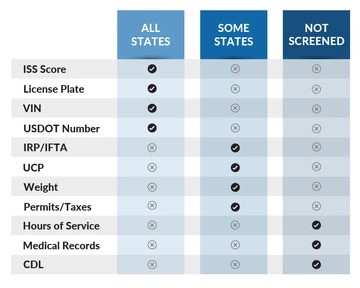
The screening criteria used is at the discretion of the enforcement agency, but these are some of the common credentials:
● The carrier’s ISS score, which reflects the overall safety profile of the fleet.
● The license and vehicle identification number (VIN), which allows law enforcement agents to screen against registration, permits, and taxes.
● The weight of the vehicle.
By combining these credentials into one system, bypass programs provide officers with a more efficient screening process. They can focus their efforts on unsafe vehicles while allowing safer vehicles to stay on the mainline and deliver their load faster.
However, this does not mean safe carriers do not need to be inspected. Law enforcement sets a “random pull-in factor” at each inspection station so that a certain percentage of fleets, regardless of ISS score or bypass system integration, are subject to being inspected. This is an important safety precaution that ensures all fleets are fairly screened.
Bypass services, like Drivewyze PreClear®, use ISS scores to predict the likelihood of requiring an inspection. The lower the score, the less likely the truck will be asked to pull in. This prediction and the random pull-in factor help improve safety on the road while decreasing inspections for fleets with outstanding safety scores.
Misconception #2: Bypass Programs Use CSA Scores for Screening
Compliance, Safety, Accountability (CSA) scores are calculated using roadside inspection and crash report data from the previous 24 months. The Federal Motor Carrier Safety Administration (FMCSA) then combines these various CSA scores to determine a single-digit ISS score for a fleet, which offers a more comprehensive view of a fleet’s overall safety profile. For this reason, bypass systems only screen for a fleet’s ISS score, not its collection of different CSA scores over the past two years.
In fact, bypass programs provide an opportunity for fleets to improve their ISS score. Every bypass and clear inspection show the carrier’s commitment to safety. Over time, this lowers the ISS score, enhances the safety profile, and increases each truck’s likelihood of bypassing a weigh station.
Some bypass systems, like Drivewyze PreClear®, also provide real-time data reporting to identify the most common criteria inspected at weigh stations. This gives fleet managers an in-depth look at which safety areas need the most attention. They can restructure their safety strategy to target those areas and improve their ISS score moving forward.
Misconception #3: Bypass Programs are Used to Track Drivers
Mobile bypass technology makes a driver’s job safer and easier.
It’s the mobile nature of these kinds of technologies however, that raises concerns about driver privacy. Bypass systems screen for information that will only alert law enforcement of any safety violations. It’s important to note that officers will never check a driver’s:
● Hours of Service (HOS) log
● Past medical records
● Commercial driver’s license (CDL)
Bypass programs use secure mobile technology to ensure this personal information is not provided to law enforcement. Additionally, the bypass system will only record the date and time that a truck bypasses or is asked to pull into a weigh station and does not track the vehicle before or after the station.
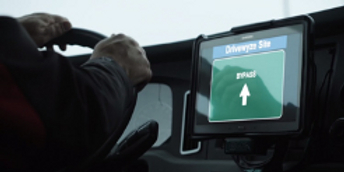
How information is processed inside the station is also strictly regulated:
● Any vehicle data collected at the station does not leave the station.
● Driver data is never collected or shared across locations or officers.
● Law enforcement personnel can only see weigh stations within their jurisdiction visited by the driver, but not in neighboring jurisdictions.
● Officers cannot use this data to issue a citation. For example, they cannot use location data to give a driver a speeding ticket.
Not only do bypass programs keep drivers’ data private, but they also make driving safer. Services like Drivewyze PreClear® offer a hands-free system that can be used on the driver’s mobile device. It sends heads-up notifications to warn drivers about upcoming inspection stations, along with safety alerts for high-risk areas on the road. Plus, since the system doesn’t require a transponder, drivers can avoid dangerous lane changes or slowing down to get a bypass green light.
Test the Benefits of a Bypass Program with a Free Trial
Bypass technology is designed to make trucking easier—for drivers, fleet managers, and law enforcement. But with any innovation, there are going to be questions and concerns.
By staying educated on bypass programs and how they integrate with weigh stations, carriers can improve cost and operational efficiency, improve safety scores, and boost driver safety and retention.
Curious whether a weigh station bypass system can work for your fleet? Contact us to start a free trial of North America’s largest weigh station bypass service, Drivewyze PreClear®.
Everything You Need to Know About Bypass Programs
Weigh station bypass programs have become an integral part of the trucking industry. All carriers have experienced the impact of roadside inspections on their operations, from route delays to increased costs. Bypass programs provide a solution to these challenges.
While fleets are benefiting from the continued improvement to bypass technologies, there are common questions and misconceptions about how bypass programs work. By understanding the basics of bypass systems, fleets can take advantage of significantly enhanced

operational efficiency, driver safety, and employee satisfaction while increasing their opportunities for bypasses.
The Most Common Misconceptions About Bypass Programs
1. Bypass programs will result in more inspections.
Bypass programs are used by officers to reward carriers with good safety ratings and keep inspection sites running smoothly. Bypass screening technology allows law enforcement to review a carrier’s Inspection Selection System (ISS) score, the license and vehicle identification number (VIN), and the vehicle’s weight. Inspection personnel can focus their efforts on unsafe vehicles while allowing safer fleets to remain on the mainline.
2. Bypass programs are used to track drivers
Most bypass services use secure mobile technology to ensure no sensitive information is delivered to law enforcement, such as a driver’s Hours of Service (HoS), medical records, and Commercial Driver’s License (CDL).
Bypass technology is designed to only screen for vehicle-specific criteria, such as the ISS score, license plate, VIN, USDOT number, and record the date and time that a truck bypasses or is asked to pull into a weigh station. The processing of this information is strictly regulated and does not leave the station.
3. Bypass programs require a transponder
While some bypass programs run on transponder-based functionality, more advanced technologies, like Drivewyze PreClear®, are completely transponder-free. GPS-based mobile software allows vehicles to stay on the mainline without slowing down or changing lanes to drive under a transponder reader.
4. Bypass programs use CSA scores for screening
The only safety score screened by a bypass program is the carrier’s ISS score, which is an aggregation of a fleet’s Compliance, Accountability, Safety (CSA) scores. It provides law enforcement with a more comprehensive view of a fleet’s safety profile.
However, safety scores do have important roles in how weigh station bypasses are granted and, if managed well, can increase the opportunity for more green lights en route.
How ISS and CSA Scores Apply to Bypass Programs
Although similar, CSA and ISS scores have distinct differences that come into play during a truck’s route.
● The CSA score is a collection of safety data of roadside inspections, crash reports, investigation results, and registration details from the last 24 months, aggregated by the Federal Motor Carrier Safety Association (FMCSA).
● A fleet’s ISS score is an aggregation of the CSA scores. Ranging from 1 to 99 (100 being out of service), an ISS score reflects a carrier’s overall safety profile. The lower the score, the better the safety rating. Bypass technology screens for a vehicle’s USDOT number to locate the fleet’s ISS score in the federal system.
A great ISS score will typically result in more bypasses; a truck with an outstanding score could receive bypasses up to 98% of the time. Bypass services, like Drivewyze PreClear®, use the ISS score to determine the likelihood of performing an inspection.
However, a poor ISS score does not mean that a fleet won’t receive any bypasses. It may receive fewer, but a carrier can improve its safety score over time with a software-based bypass service that can automatically increase a carrier’s opportunity for bypass based on sheer volume.
Invest in a Bypass Service for more Green Lights
Adopting a transponder-less bypass service can provide carriers with significant cost and time savings. In one case, Mesilla Valley Transportation saved 1,579 hours and over $164,000 in operating expenses in just one month with such a system. Fleet managers should consider three primary criteria when selecting a 100% software-based bypass service:
1. Network Coverage on Routes, Nationwide & Beyond
Choose a bypass service that operates on the broadest possible network to increase the opportunity for a bypass, especially if the carrier operates in multiple jurisdictions. The bypass service should be available at fixed and mobile inspection sites, with functionality at scales that are Weigh In Motion (WIM) enabled and scales that are not. Currently, the bypass service with the largest bypass network across the industry—including two Canadian provinces—is Drivewyze PreClear®.
2. Ease of Use, For Efficiency & Safety
Select a software-based bypass service that can be easily integrated onto the cab’s existing telematics devices (ELD) or the driver’s personal mobile phone or tablet.
Software-based bypass services leverage GPS and geo-fencing technologies and provide hands-free functionality with advanced notification capabilities, like heads-up notifications for upcoming inspection stations and safety alerts for high-risk areas. This allows drivers to stay on the mainline for longer, avoiding delays or dangerous lane changes.
3. Opportunities for a Connected Truck
A bypass service that allows for cross-platform integration onto existing telematics and mobile devices means carriers only have to invest in the base software once. Additional software solutions can be installed with no extra hardware needed. This gives fleets the opportunity to expand their operational capabilities quickly and cost-effectively.
For example, Drivewyze’s Safety+ service is an application that runs on the fleet’s existing ELD system and proactively prevents accidents and citations through in-cab and back-office driver coaching.
Real Fleets, Real Results
Wondering how your fleet will benefit from investing in a bypass service? These fleets found tangible solutions to their operational problems with the leading software-based bypass service from Drivewyze PreClear®.
● After implementing a transponder-less bypass service in 2015, USA Truck Capacity Solutions saved more than $1,360,000 over six months and returned 12,576 hours of drive time to the operation.
● In an effort to move away from its transponder-based system, which only worked at permanent weigh stations and caused technical difficulties for drivers, Cargo Transporters transitioned to a software-based service. This resulted in a 748% ROI, including a cost savings of $36,000 in the first two weeks of use.
● Barole Trucking’s outstanding safety score had Commercial Vehicle Enforcement (CVE) officials recommend Barole invest in a weigh station bypass service to avoid time spent at inspection sites. The fleet has since reduced weigh station delays by 17 hours and increased the productivity of their out-of-state division trucks by up to four additional loads every month.
Interested to see how a bypass system can improve your fleet operation? Start a free trial of North America’s largest weigh station bypass service, Drivewyze PreClear®.



